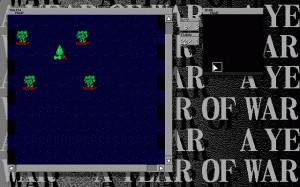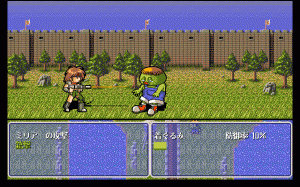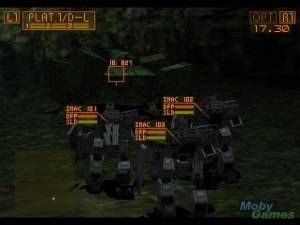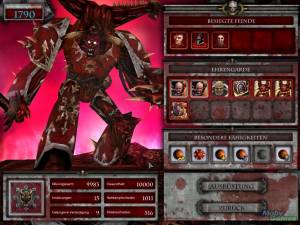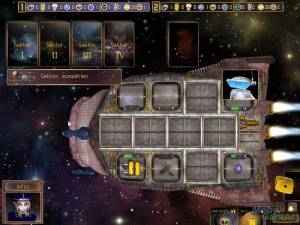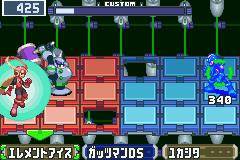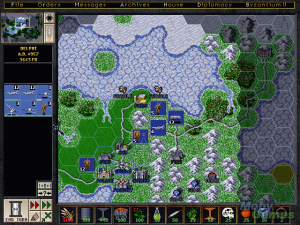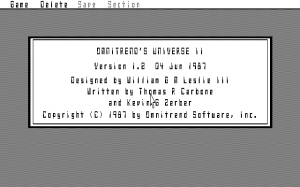Game Classification
Galactic Revolution Brøderbund Software (U.S.A.), 1980
Classification
VIDEO GAMEKeywords
Market
This title is used by the following domains:- Entertainment
Audience
This title targets the following audience:Age : 12 to 16 years old / 17 to 25 years old
General Public
Gameplay
The gameplay of this title is Game-based(designed with stated goals)
The core of gameplay is defined by the rules below:
Similar games
Galactic Revolution is the sequel to Galactic Empire and Galactic Trader and the third game in the Galactic Saga.
The Central Galactic System is united under the rule of the emperor Tawala Mundo, but there's trouble brewing. Tawala's violent temper has cost many of his subjects their life. The military's support for the empire dwindles due to the popularity of the former fleet commander (and protagonist of the previous games), Julian du Buque. A growing bureaucracy makes times hard for trade and sees the rise of Jan Swart, leader of the Broederbund, a secret guild of traders. These three men now compete for influence and power in the galaxy, for a revolution is at hand.
Galactic Revolution is a strategy game of political maneuvering and can be played by up to three players. A single player always plays du Buque; in two-player games the second player plays Tawala. Any remaining factions are controlled by the computer. The goal of the game is to control all 18 planets in the empire.
Control over a planet is won through support of five power groups: manufacturers, military, peasants, traders, and bureaucrats. On each planet, a player's goal should be to increase the relative influence of those groups favorable to them while at the same time decreasing the influence of those favorable to the other factions. After a player travels to the planet in question, this is done through so-called "administrative action". For example, instituting a general draft increases the influence of the military but decreases the influence of the peasants and traders, since they get drafted. Other options are land reforms, lowering or increasing trade tariffs or taxes, reducing bureaucracy, and more. Besides the immediate effect on the power distribution on the planet, these actions also influence the galaxy-wide standings of the player to each faction. A planet falls to a player when a certain threshold of support is crossed, figuring in both local and galaxy-wide sympathies. At the end of each turn, planets under a player's control can be utilized to collect taxes, build ships and weapons and draft troops. These are necessary to build up one's legions: one legion requires one unit of arms, one ship and 10 troops.
Taking administrative action is only possible on independent worlds or worlds not controlled by another player. While it is possible to take control by political maneuvering, there is also the military option. Winning the battle for a planet not only allows the victor to take local administrative action (temporarily), but also increases support from all power groups in the galaxy. On the other hand, losing a battle decreases support across the board. A planet's defender may choose to order a tactical retreat, in which case a loss has no influence on the power groups.
Another option involving the military (which is not available in the single-player game) is the blockade. A blockaded planet cannot be used by its owner for collecting taxes, drafting or construction. The blockade must be broken by sending the same number of legions used to establish it, but troops used to make or break a blockade are always lost.
Another political option is the alliance (not available in the single-player game). Allied players share their resource pool of ships, troops and arms, allowing for the forming of larger numbers of legions in the case of an uneven distribution of resources.
Each faction begins the game with different starting conditions, requiring different strategies for play. Du Buque, for example, controls only one planet at the beginning, has strong support with the military and medium support with the traders, and has a large number of troops, but only relatively few ships, at his disposal. Tawala controls the most planets, has strong support of the bureaucrats but lousy support of the traders, very little money, lots of arms, but only a handful of ships. Swart has the most money and ships, but the fewest troops, and his support among both the peasants and the bureaucrats is low. [source:mobygames]
Distribution : Retail - Commercial
Platform(s) : Apple II - TRS-80
The Central Galactic System is united under the rule of the emperor Tawala Mundo, but there's trouble brewing. Tawala's violent temper has cost many of his subjects their life. The military's support for the empire dwindles due to the popularity of the former fleet commander (and protagonist of the previous games), Julian du Buque. A growing bureaucracy makes times hard for trade and sees the rise of Jan Swart, leader of the Broederbund, a secret guild of traders. These three men now compete for influence and power in the galaxy, for a revolution is at hand.
Galactic Revolution is a strategy game of political maneuvering and can be played by up to three players. A single player always plays du Buque; in two-player games the second player plays Tawala. Any remaining factions are controlled by the computer. The goal of the game is to control all 18 planets in the empire.
Control over a planet is won through support of five power groups: manufacturers, military, peasants, traders, and bureaucrats. On each planet, a player's goal should be to increase the relative influence of those groups favorable to them while at the same time decreasing the influence of those favorable to the other factions. After a player travels to the planet in question, this is done through so-called "administrative action". For example, instituting a general draft increases the influence of the military but decreases the influence of the peasants and traders, since they get drafted. Other options are land reforms, lowering or increasing trade tariffs or taxes, reducing bureaucracy, and more. Besides the immediate effect on the power distribution on the planet, these actions also influence the galaxy-wide standings of the player to each faction. A planet falls to a player when a certain threshold of support is crossed, figuring in both local and galaxy-wide sympathies. At the end of each turn, planets under a player's control can be utilized to collect taxes, build ships and weapons and draft troops. These are necessary to build up one's legions: one legion requires one unit of arms, one ship and 10 troops.
Taking administrative action is only possible on independent worlds or worlds not controlled by another player. While it is possible to take control by political maneuvering, there is also the military option. Winning the battle for a planet not only allows the victor to take local administrative action (temporarily), but also increases support from all power groups in the galaxy. On the other hand, losing a battle decreases support across the board. A planet's defender may choose to order a tactical retreat, in which case a loss has no influence on the power groups.
Another option involving the military (which is not available in the single-player game) is the blockade. A blockaded planet cannot be used by its owner for collecting taxes, drafting or construction. The blockade must be broken by sending the same number of legions used to establish it, but troops used to make or break a blockade are always lost.
Another political option is the alliance (not available in the single-player game). Allied players share their resource pool of ships, troops and arms, allowing for the forming of larger numbers of legions in the case of an uneven distribution of resources.
Each faction begins the game with different starting conditions, requiring different strategies for play. Du Buque, for example, controls only one planet at the beginning, has strong support with the military and medium support with the traders, and has a large number of troops, but only relatively few ships, at his disposal. Tawala controls the most planets, has strong support of the bureaucrats but lousy support of the traders, very little money, lots of arms, but only a handful of ships. Swart has the most money and ships, but the fewest troops, and his support among both the peasants and the bureaucrats is low. [source:mobygames]
Distribution : Retail - Commercial
Platform(s) : Apple II - TRS-80
 Français
Français English
English






